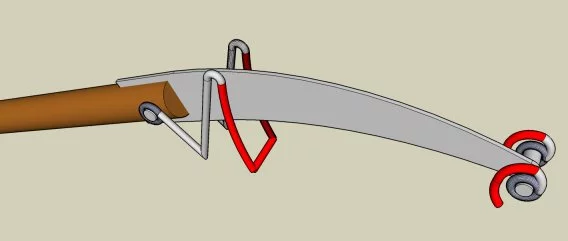Using a hand saw is nobody’s idea of a good time, but one inventor is trying to at least make it a little easier. John Zimmerman, a software developer by trade, has created what he calls the Recoil Saw. Essentially, it’s just a saw – various types of saws, actually – with one or more spring-loaded impact bars attached to the blade. At the end of each stroke, the spring compresses as the bar hits the material being sawed, then releases that energy back into the following return stroke. The idea is that users can pretty much just bounce their way through cutting jobs, as opposed to having to purposefully stop and start between every stroke. Zimmerman, who admits he’s probably not the most unbiased tester, said that he has found it cuts twice as fast as a regular saw.
“I came up the the idea while working on a separate invention that required cutting many pieces off of metal bars, with a hack saw and miter box,” he told Gizmag. “I live in an apartment so using a power saw was not really an option. I wanted a less exhausting way to cut, and the idea for the Recoil Saw came to me after countless tiring cuts.”
Zimmerman has created working prototypes of recoil panel and hack saws, and he has also sketched out designs for a pruning saw and a file. While the bar/spring mechanism on his prototypes might look a little cumbersome, his sketches feature a much more compact mechanism that combines the bar and spring in one simple unit.

“At this time, I am looking to find hand tool manufacturers interested in licensing the recoil saw, which is still patent pending,” he told us. “Of course, to me it seems like a great idea, who wouldn't enjoy spending less time sawing?”
Below are two videos that he shot; one of his recoil hack saw cutting through a board, and one of a regular saw doing the same job. Of course, it's not exactly a scientific testing method as it's impossible to confirm that the same amount of force was being applied to both saws, but it’s still an interesting comparison.
Via InventorSpot







